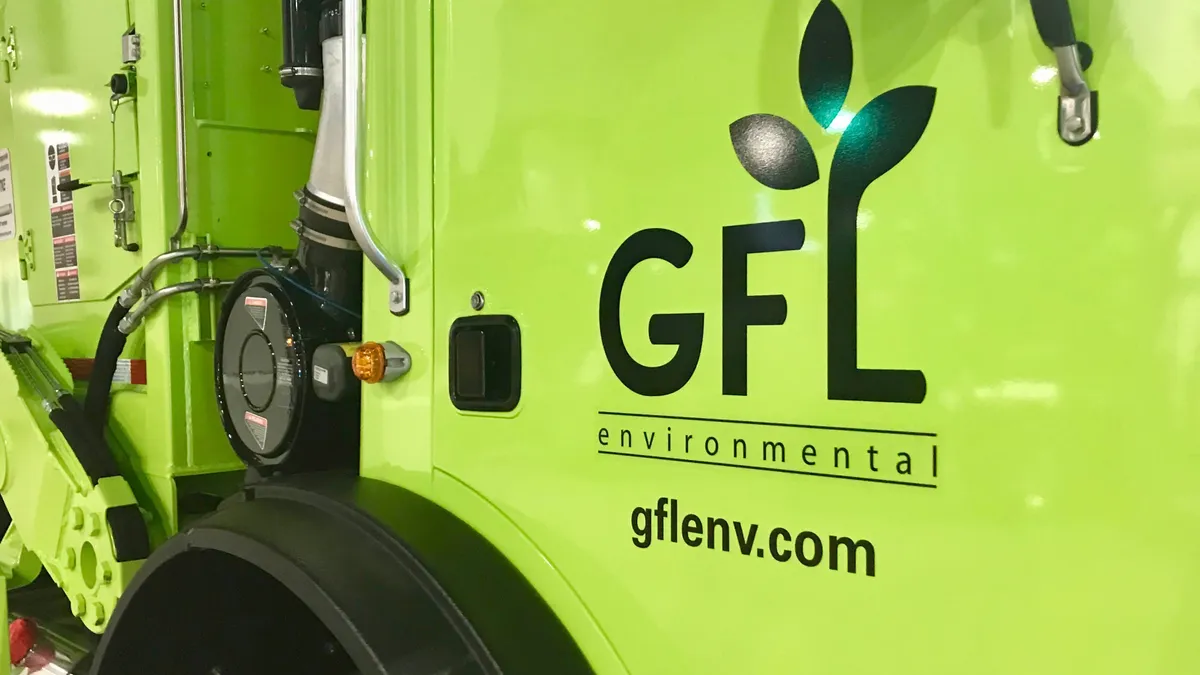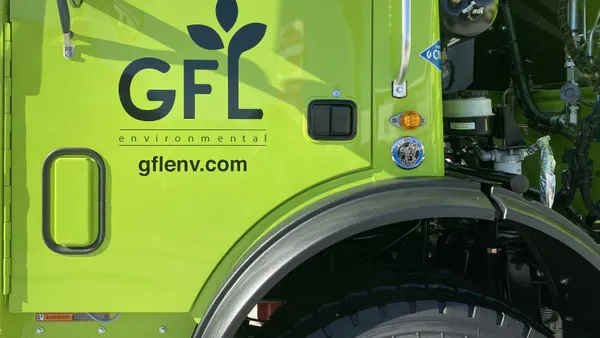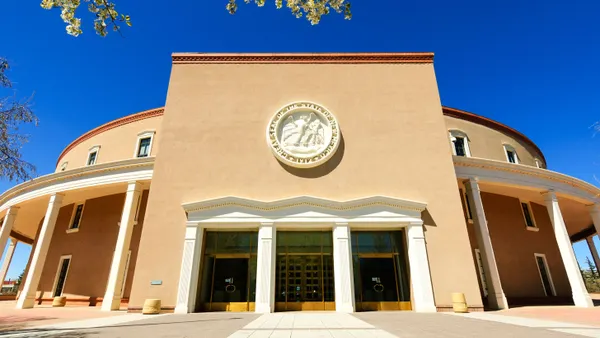All financial information in Canadian dollars
Q3 Earnings
| Revenue | $1.485B |
| Year-Over-Year Change | 43.3%▲ |
| Net Loss | $245.2M |
GFL Environmental's rapid North American expansion continues, with the company reporting during quarterly earnings results it has now deployed $2.2 billion to close 37 acquisitions and is seeing positive economic recovery trends throughout its portfolio.
Overall, the deals are worth an estimated $735 million in annual acquired revenue for GFL going forward. Recent highlights include Canada's Terrapure Environmental, Illinois-based Peoria Disposal Company, the Alabama Dumpster group of companies, and various Waste Management assets in Canada and Michigan. At the same time, the company has seen a $157.6 million in divestiture proceeds — namely from sales to Noble Environmental and LRS — and could see further shedding of some assets in non-priority markets within the next year.
Economic update
- GFL reported an overall 8.2% organic growth rate for the quarter, including 4.3% from pricing, 2.4% in volume increases and a 1.5% boost from improved commodity pricing. U.S. volumes were up by 2%, with the Midwest performing especially well. Canadian volumes also continue to improve as the country's pandemic restrictions ease.
- Growth in GFL's infrastructure and soil remediation business turned positive for the first time since the second quarter of 2020, as economic activity ramps back up in Canada. The earlier-than-anticipated close of the Terrapure deal also gave a notable boost to liquid waste revenues, which had similarly been lagging.
- GFL executives were confident they can see sizable pricing gains heading into next year as contracts reset and other opportunities arise. "Similar to 2021, 2022 has the opportunity for continued acceleration of pricing, as opposed to the Q1 peak that you might normally see," said Chief Financial Officer Luke Pelosi during a Thursday earnings call.
GFL's results cap off a third quarter earnings season for the industry's biggest solid waste companies that has largely focused on an active M&A environment and mounting inflationary pressures.
CEO Patrick Dovigi recognized inflation — along with related labor and supply chain factors — have also affected GFL, but he described it as a manageable issue through price increases and reliable service. And in the grand scheme of potential business concerns, he said cybersecurity outweighed any more near-term factors.
“Labor issues and challenges are definitely real. I think when you talk about pricing and labor it's all sort of part of the same conversation, because at the end of the day it's very simple — we're paid to pick up waste," he said. "If you pick up the waste you can generally charge whatever you want."
GFL's labor crunch has started to ease in recent months, but Dovigi said the company is still being selective in what new business it goes after and won't be slowing down its efforts to retain or boost staff levels heading into 2022. As for the supply chain challenges that have affected competitors in a variety of ways, Dovigi said GFL's procurement team was managing it well but the outlook on that front is less certain.
ESG investments
- GFL now anticipates spending a net amount of $540 million on capital expenditures this year, up from prior guidance, with the potential to deploy an additional $100 million in proceeds from recent divestitures. Priorities include ongoing MRF investments, automated side load collection vehicles and compressed natural gas fleet expansion.
- The recently announced GFL Renewables division is looking at new natural gas opportunities for 18 landfills that could collectively generate at least $75 million to $100 million in free cash flow. GFL is starting with five or six sites that offer the simplest options to construct projects and is working to lock down joint venture agreements in the coming months.
- On the recycling side, Dovigi outlined the potential to build as many as four or five new MRFs in existing markets. The Southeast, Midwest and Michigan were listed as potential areas, though ongoing investment is expected in Canada as extended producer responsibility programs ramp up. Pelosi noted retrofits and upgrades of existing MRFs will also be a priority.
Looking ahead
- Like its other large competitors, GFL updated 2021 guidance again based on positive recovery trends. The company now anticipates it could hit $5.41 billion in revenue, $1.45 billion in adjusted earnings before interest, taxes, depreciation, and amortization (EBITDA) and $530 million in free cash flow.
- Looking longer term, Dovigi said he now believes GFL could hit $1 billion in free cash flow within five years of the company's March 2020 initial public offering, which would exceed targets it set at that time. “The industry has never been healthier from a price and a volume perspective. M&A opportunities continue to be very exciting," he said.
- GFL is expected to complete at least 40 acquisitions by the end of the year, with ample funding available from a new US$300 million equity commitment by HPS Investment Partners. Executives anticipate locking down another C$50 million to $100 million in acquired revenue during the fourth quarter, with much more to come in 2022.











